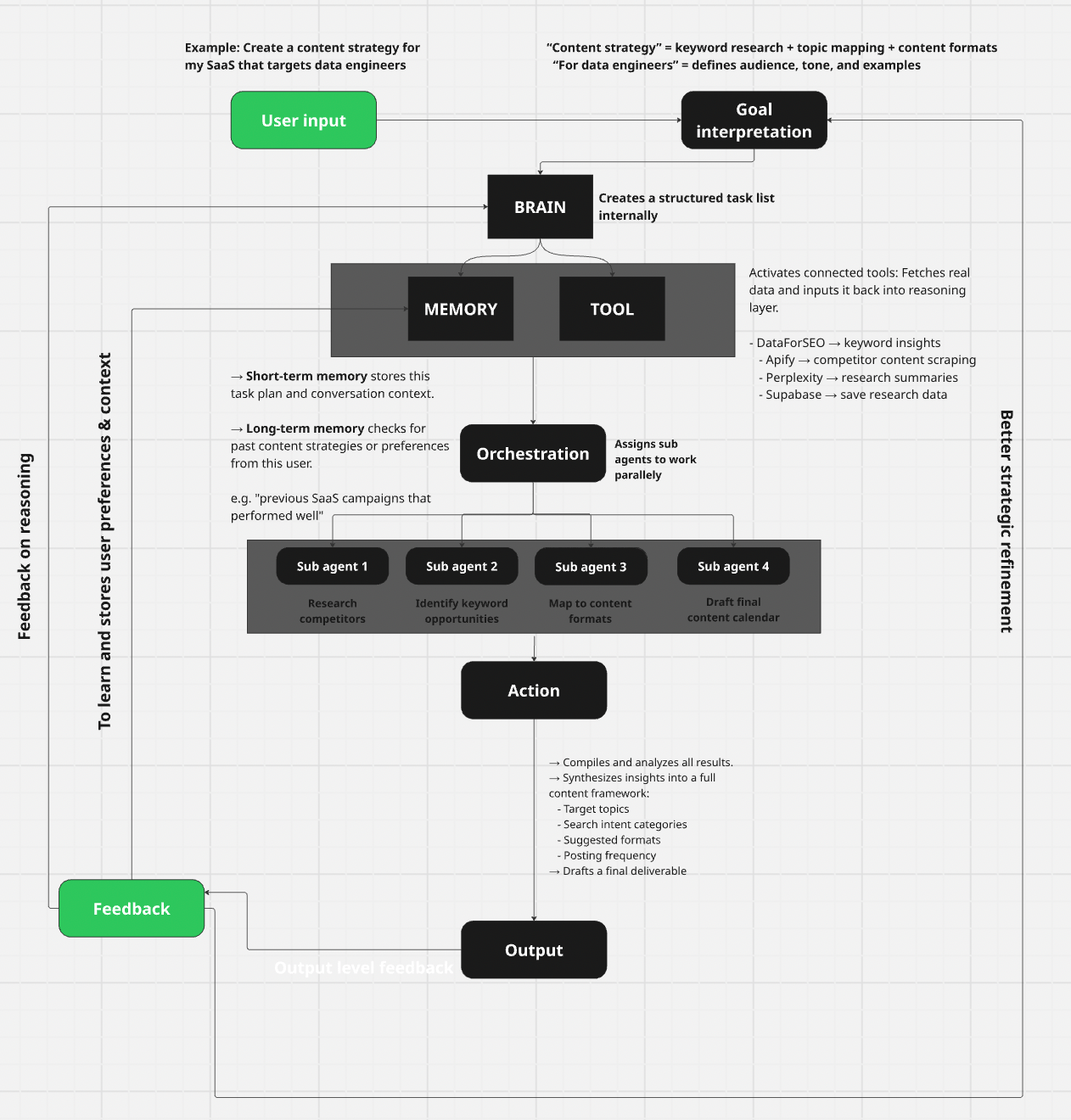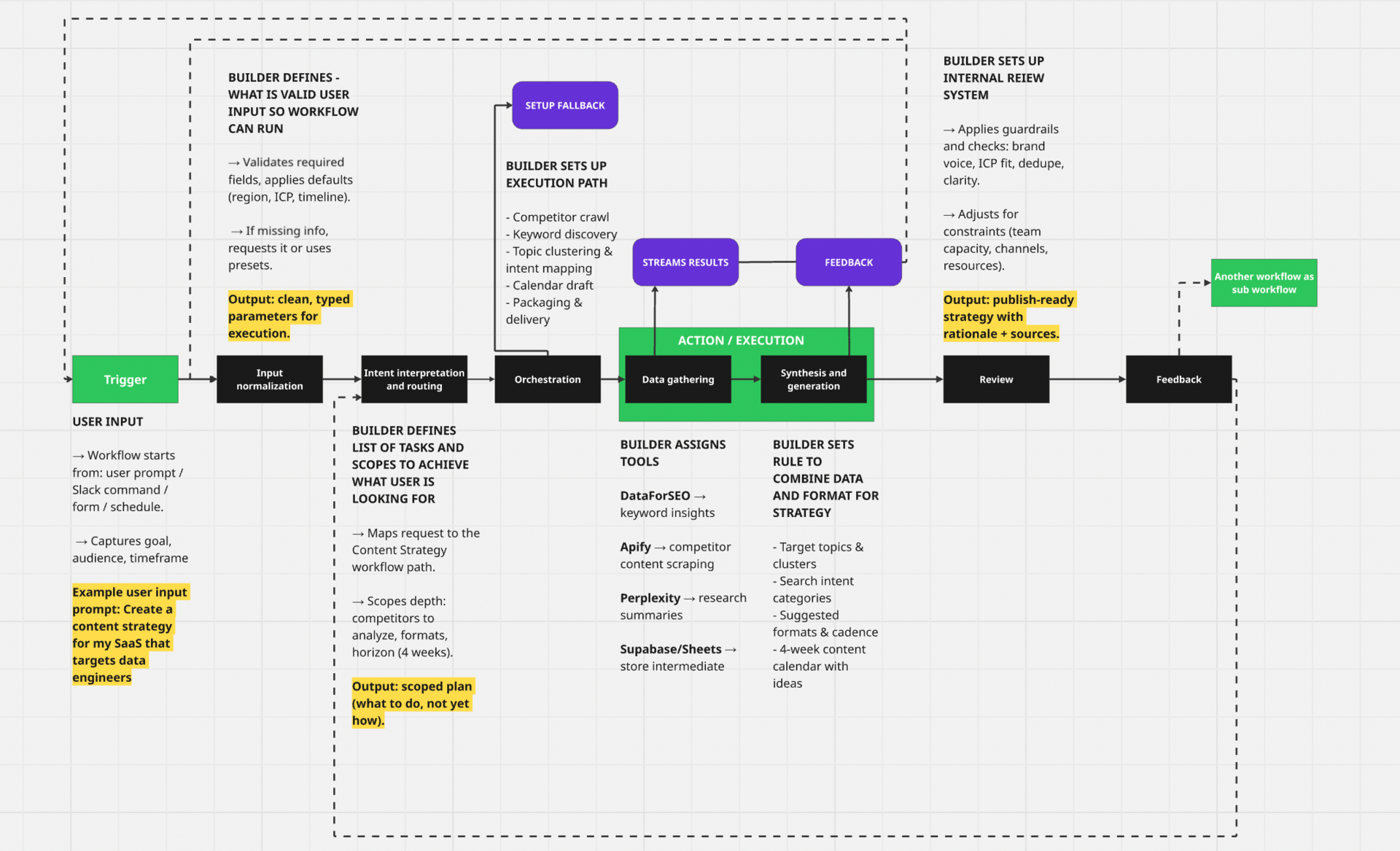Time for some reality check. If you’ve been following the AI world lately, you’ve probably noticed the flood of discussions around agents vs workflows. What’s different, what’s better, whether they’ll replace each other.
Chances are, you’re either still figuring it out or you’ve already formed your own take.
The real question:
If we can build agent-based workflows, why do we need agents?
And if agents can run workflows, why do we still need workflows at all?
It’s an ongoing debate and today, I’ll break down how agents actually work and how workflows differ, so you can decide where to place your bets.
Anatomy of an agent

To sum it up:
Agent Functions | Stage | What It Does |
|---|---|---|
Thinking | Goal Interpretation | Reasoning Engine | Understands the user’s goal and plans next steps |
Remembering | Memory | Stores and recalls relevant context, data, and past results |
Doing | Tool Access Layer | Action Execution | Executes actions and uses connected tools to gather data |
Managing | Orchestrator | Coordinates sub-agents or modules to handle complex tasks |
Learning | Feedback Loop | Collects feedback, measures results, and improves over time |
Delivering | Output to User | Presents the final outcome, ready for user action |
Anatomy of a workflow

To sum it up:
Triggering - Starts the workflow based on a prompt, form, or schedule
Validating - Validates and cleans inputs for structured execution
Scoping and routing - Maps the user goal to predefined workflow tasks and paths
Orchestrating - Runs task flow, assigns tools, defines fallback rules
Executing - Gathers and synthesizes data using connected tools
System based reviewing - Applies checks for quality, tone, and ICP fit before output
Feedback - Feeds results or learnings into another workflow or revision cycle
Delivering - Produces structured, ready-to-publish output
Now that you’ve seen both sides, here’s how they differ from each other.
Agent vs Workflow Anatomy
Concept | Agent Anatomy | Workflow Anatomy |
|---|---|---|
Control | The agent decides what happens based on intent and reasoning. | You define what happens (steps, order, logic). |
Tool Selection | Dynamically chosen by reasoning layer depending on the goal. | Predefined in workflow logic (manually chosen integrations). |
Memory | Stateful - short-term memory tracks current context; long-term memory recalls user history. | Stateless - each run starts fresh; context must be re-fed. |
Adaptation | Adaptive and feedback-driven; adjusts based on outcomes. | Rigid, step-based; can only follow predesigned paths. |
Context Handling | Context recalled automatically from memory or conversation history. | Context provided manually per run (inputs, variables). |
Initiation | Triggered by intent (natural-language command, implicit signal). | Triggered by an event (schedule, webhook, form submission). |
Execution Model | Orchestrates multiple sub-agents dynamically based on goals. | Executes sequentially or in predefined parallel branches. |
Feedback Integration | Continuous - agent updates its understanding and behavior automatically. | Usually manual - user must tweak the workflow or data source. |
Error Handling | Contextual recovery and reasoning-based error correction. | Predefined fallbacks and retries. |
Scalability | Scales by generalization (same agent adapts across domains). | Scales by duplication (clone or modify workflow). |
Wrapping up
Agents and workflows aren’t competing ideas they complement each other.
Workflows are structured systems you build.
Agents are adaptive systems that build with you.
Agents
know what tools to use and how to use them
maintain context and memory
proactively suggest what’s needed
Workflows
you define what tools need to be used and how
you provide context with each execution
you build new workflows for each use case
Whether you’re building your first workflow or experimenting with agents, remember: it’s not about choosing one, it’s about knowing when to use each.
Curious about building workflows or working with agents? Join 3000+ vibe marketers who are already experimenting, building, testing and learning how to actually make AI work for them. And they’re seeing the impact.
See you on the inside.
—The Boring Marketer

Let’s Vibe
Join the vibe marketers community where marketers are figuring AI out together: from simple automations to complex workflows, agents, and full systems.
Twice a month, I jam with them on how I’m using AI in marketing, answer growth questions and learn what they’re building.
We are also launching mentor sessions, where expert vibe marketers share their strategies and tactics for growing a business with AI.
Got feedback or a question? Just hit reply. I read every message.
Know someone who’d love this newsletter? Share it with a friend who is figuring AI out too.
